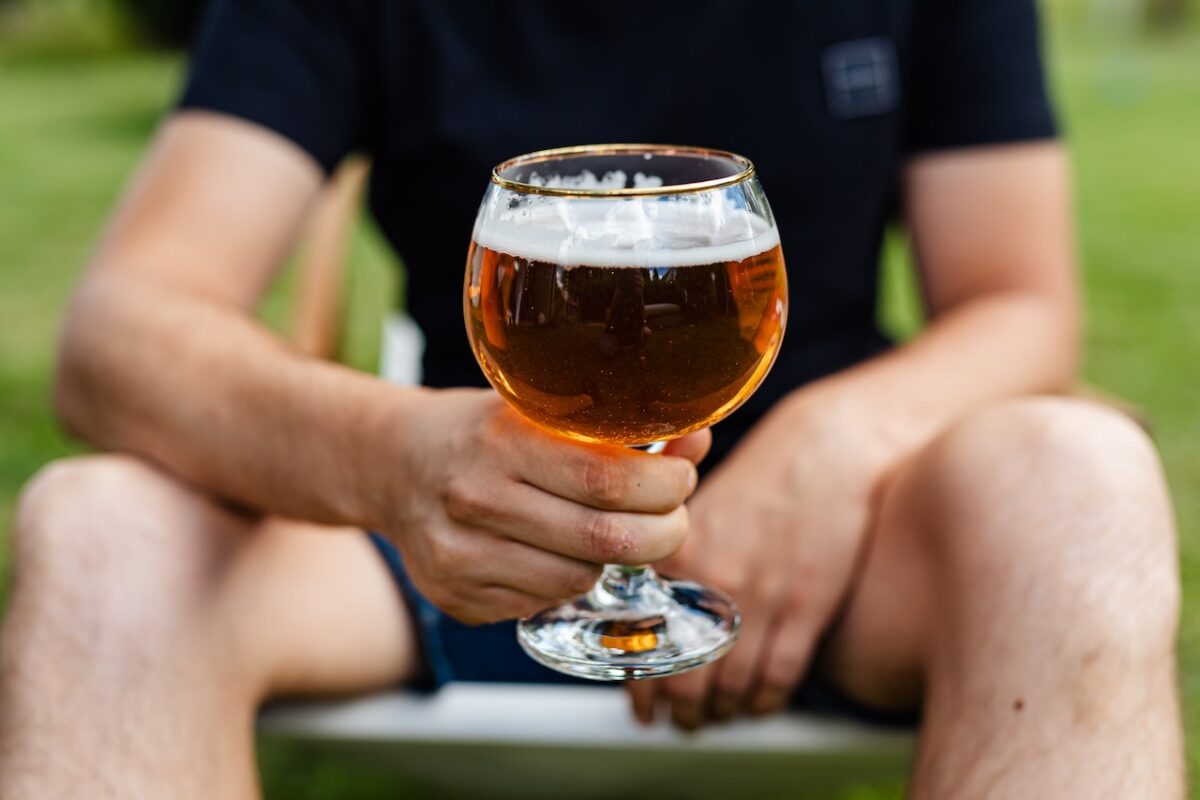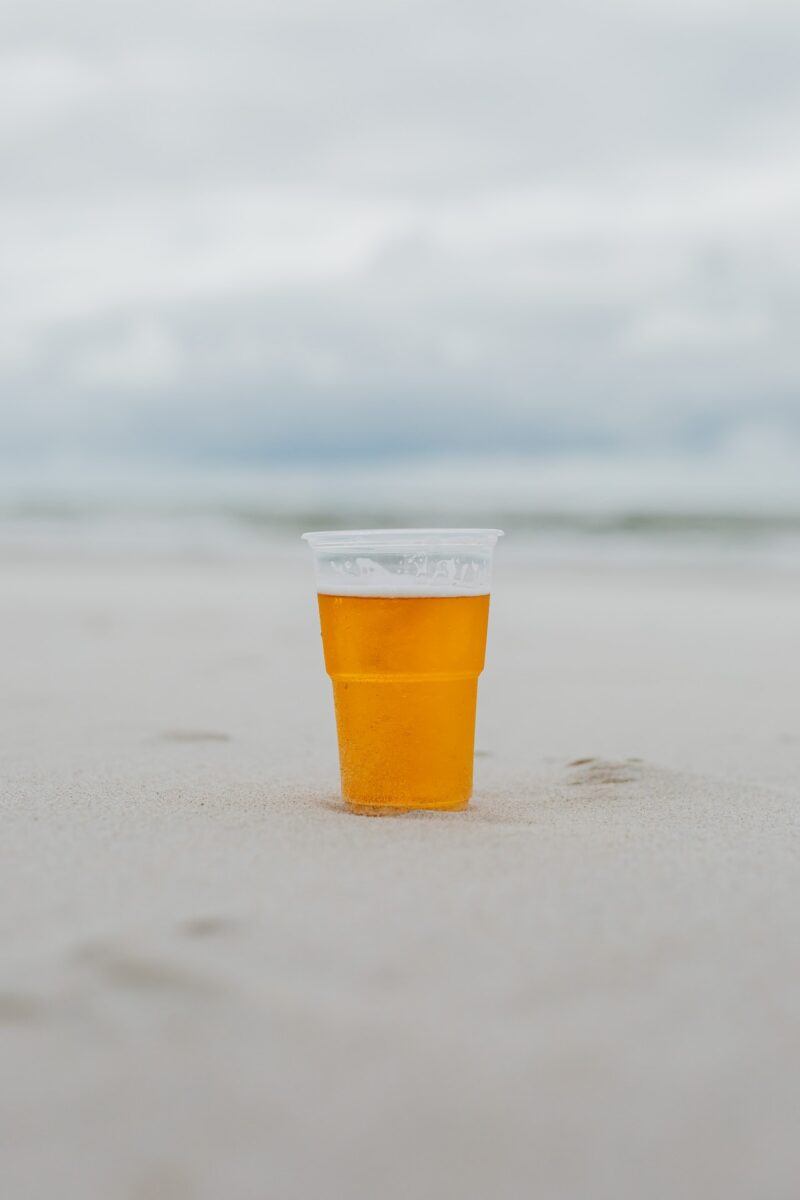If you buy something through a link in our posts, we may get a small share of the sale.
What is IBU in beer? This question has been boggling beer lovers over time, especially those new to the beer world. Many people think that beer with high IBU is automatically bitter and unpleasant. There is more to this that beer enthusiasts should know.
Contents
What Is IBU in Beer?
IBU (International Bittering Unit) is a scale used to gauge the level of bitterness in a beer. It specifically measures parts per million of isohumulone found in beer and beverages. Isohumulone is a bittering agent found in hops, and it provides a bitter taste to the beers when added during the kettle boil. Therefore, the higher the IBU number on the scale, the more bitter the beer is, and vice versa.
While IBU measures the bitterness with a lower number indicating less bitterness, it is vital to understand that other ingredients can also introduce bitterness to the beer. For instance, malt plus other flavors can introduce bitterness to the beer.

Therefore, you may find a scenario where a beer with 30 IBUs with less malt character may have more bitterness than a beer with 60 IBUs with a powerful malt profile. So, if you are a brewer and want to ensure the bitterness is balanced in beer, check the malt profile, as it plays a significant role in the final product.
How Is IBU Measured?
Now that you know what IBU is in a beer and the acid (alpha acid) responsible for bittering, it is time to understand how to measure it accurately. Typically, there are two popular ways of measuring IBU in a beer:
The Spectrophotometry Method
Spectrophotometry involves boiling hops to promote the alpha acid to become active (to isomerize). These active alpha acids will then become hydrophobic, shifting to a specific layer in the boiled wort, and be allowed to settle.
After settling, the wort sample is brought to the spectrophotometry, where alpha acids’ light absorbance is read. This will give you the concentration of alpha acid in the beer.
The Manual Method (Tinseth’s Formula)
This method involves calculating the bitterness manually using a formula. To get an accurate bitterness using Tinseth’s formula, you must know the quantity of alpha acid in the hops and how much bitterness these acids produce per gram.
After getting the exact figures, you then use the formula to calculate how many bittering units are present in your beer. Like any other tool, the formula method will give you an accurate IBU and help you understand when to balance the bitterness in the beer.
How to Read the IBU Scale
Reading the IBU scale is very simple. The scale ranges from o to 120; the higher the number, the higher the bitterness, and vice versa. IBU results from a chemical analysis that measures the amount of iso-alpha acids in beer. The measurement is expressed as parts per million(ppm), giving you the amount of bitterness in the beer.
Two scales are used to measure IBU: the American and the European Scale. So it is upon the brewer to choose the scale to use. Remember, the mission is to get an accurate reading, so your batch does not become too bitter.
The European scale measures both the alpha and beta acid content separately. Its scale ranges from 0 to 100; on this scale, one unit equals 7 ounces of alpha or beta acid. Conversely, the American scale ranges from 0 to 120 and only measures the alpha acids.

Factors Affecting Bittering Power of Hops in Beer
The beer brewing process involves fermenting starch that later turns into alcohol (beer). Before the final product, other ingredients are added to enhance the flavor of the beer. One of the flavors is a hop, contributing to the beer’s bitterness. Therefore, the degree of bitterness produced by the hop plant depends on various factors:
- The type of hops used: The type of hops used will play a role in bitterness. Hops with high concentrations of alpha acid will lead to a stronger taste, unlike hops with less alpha acid concentration.
- The number of hops added: The higher the number of hops in the wort, the more bitter the beer will be.
- When the hops are added: Timing plays a crucial role when adding hops during the brewing process. When added early, hops will make beer more bitter, unlike when added late in the process.
Frequently Asked Questions
Is 40 IBU Bitter?
No, beer with an IBU of 40 is not considered bitter. Generally, beers with IBU from 20 to 45 contain a mild to pronounced hops presence. Only beers beyond an IBU of 45 are considered more bitter.
What Is Perceived Bitterness in Beer?
The perceived bitterness results from the interaction between the trigeminal sensations(elicited by hop aroma extract in the mouth) and hop-derived bitterness.
Conclusion
IBU is an ideal tool for detecting bitterness. Like bitterness receptors on the tongue, the IBU scale measures the amount of bitterness in your beer. Though it may not be an exact science, it will still give you a better idea of whether your beer will be bitter or milder.

